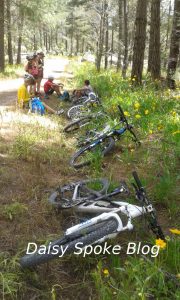
Have you ever tried to break a habit or create a new one? That’s probably all of us! There are some habits that are clearly unhelpful, and these are the ones we most often focus on – the ‘doing’ habits like smoking, sedentary behaviour, eating junk food, and going to bed late. But what about those less obvious ‘thinking’ habits. The ones that have us locked into a bad mood, overreacting, overthinking, leaving things to the last minute, being defensive, using avoidance tactics, personalising, blaming and so on. The way we habitually think forms part of everything we do and we’re often not conscious of it. But when we want to create long-lasting change, it’s vital to look at changing the way we think, and not only focus on the way we are ‘doing’ things.
Here are four tips to help you break an old habit and create a new one by focusing on new actions, and new ways of thinking.
1. You are never too old to change
No matter your age, you an always make a change. Don’t accept excuses such as “I’m too old”. Your mind’s attitude to learning plays a large part in how capable you are of breaking and creating habits. With an open attitude and willingness to try, learning a new trick is always possible. For example, even though I’d been riding bicycles since I was a young child, it wasn’t till I was in my middle age that I decided to have a go at mountain biking. What I discovered is that you need a whole new set of skills to ride mountain bikes compared to 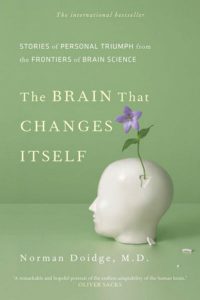 riding on paved surfaces. Not only did my body have to work differently, but my mind as well. Mountain biking has been one of the biggest learning curves in my life. I’ve been confronted with physical and mental and emotional challenges that would have been so easy to walk away from. But I kept going and little by little my skills have progressed and I’ve learned to handle some pretty big fears along the way. I’m living proof that it’s definitely possible for an oldie to learn new tricks. For some remarkable examples of how the brain can change and adapt to new challenges, have a read of Norman Doidge’s book “The Brain That Changes Itself”.
riding on paved surfaces. Not only did my body have to work differently, but my mind as well. Mountain biking has been one of the biggest learning curves in my life. I’ve been confronted with physical and mental and emotional challenges that would have been so easy to walk away from. But I kept going and little by little my skills have progressed and I’ve learned to handle some pretty big fears along the way. I’m living proof that it’s definitely possible for an oldie to learn new tricks. For some remarkable examples of how the brain can change and adapt to new challenges, have a read of Norman Doidge’s book “The Brain That Changes Itself”.
2. Change can take its time – often a long time!
In a world that encourages immediate gratification and demands fast results, focusing on  longer term goals can be seen as rebellious. Quick-fix solutions are promoted all around us – get a toned body in only 10 minutes a day, lose your baby weight in 30 days, go from a $0 to 7 figure business in less than 12 months. But the reality is that sustainable, healthy change usually takes place over a longer period of time. Quit expecting immediate results when you take up a new habit or give up an old one. Real change takes time! Research shows that when we take up a new habit we need to practise it regularly for at least three weeks, and in many cases we need to allow two to three months or more to feel the benefits, or at least to feel at ease with our new way of doing things.
longer term goals can be seen as rebellious. Quick-fix solutions are promoted all around us – get a toned body in only 10 minutes a day, lose your baby weight in 30 days, go from a $0 to 7 figure business in less than 12 months. But the reality is that sustainable, healthy change usually takes place over a longer period of time. Quit expecting immediate results when you take up a new habit or give up an old one. Real change takes time! Research shows that when we take up a new habit we need to practise it regularly for at least three weeks, and in many cases we need to allow two to three months or more to feel the benefits, or at least to feel at ease with our new way of doing things.
3. Patience, practice and persistence – not perfectionism!
If you’re anything like me, you just want to be able to do everything perfectly straight away. And if that doesn’t happen it’s so easy to give up. We can make all the excuses under the sun about why we’re not having success, but the reality is often that if we’re patient, practise a lot, persist with the discomfort, and let go of our need for perfectionism, we’re much more likely to have success. Personally I’ve find it very helpful to listen to what my inner voice is telling me when I get the urge to throw in the towel. That leads me to question why giving up is so important at that moment, and what would be the value of persisting. Then I look at what skills and strategies I need to use to achieve success. Read about how I used practice and persistence to rediscover my joys of mountain biking in one of my past blogs. Patience, practice and persistence are definite winners!
practise a lot, persist with the discomfort, and let go of our need for perfectionism, we’re much more likely to have success. Personally I’ve find it very helpful to listen to what my inner voice is telling me when I get the urge to throw in the towel. That leads me to question why giving up is so important at that moment, and what would be the value of persisting. Then I look at what skills and strategies I need to use to achieve success. Read about how I used practice and persistence to rediscover my joys of mountain biking in one of my past blogs. Patience, practice and persistence are definite winners!
4. Focus on what you DO want, not what you don’t want
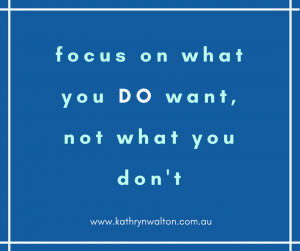 One of the trickiest things about reducing or quitting a habit (like cigarettes, chocolate, or social media) is that we focus our minds on what we’re missing out on. To demonstrate the power of this focusing technique I tell my clients “For the next 2 minutes you are NOT to think about the green dragon behind you.” I set the timer and give them occasional reminders to NOT think about the green dragon. The same thing happens when we keep telling ourselves “Don’t think about cigarettes / chocolate / Facebook …..” It’s really, really hard to achieve success unless we focus on what we DO want – the NEW habit or behaviour that we want to develop. You could try saying “Time for a walk round the block … time for my fresh fruit and yoghurt … let’s give Mum a call …” Focusing on what you don’t want is counterproductive. Focusing on what you DO want is a winning style of thinking. You can read more about looking where you want to go in my very first blog from 2 years ago.
One of the trickiest things about reducing or quitting a habit (like cigarettes, chocolate, or social media) is that we focus our minds on what we’re missing out on. To demonstrate the power of this focusing technique I tell my clients “For the next 2 minutes you are NOT to think about the green dragon behind you.” I set the timer and give them occasional reminders to NOT think about the green dragon. The same thing happens when we keep telling ourselves “Don’t think about cigarettes / chocolate / Facebook …..” It’s really, really hard to achieve success unless we focus on what we DO want – the NEW habit or behaviour that we want to develop. You could try saying “Time for a walk round the block … time for my fresh fruit and yoghurt … let’s give Mum a call …” Focusing on what you don’t want is counterproductive. Focusing on what you DO want is a winning style of thinking. You can read more about looking where you want to go in my very first blog from 2 years ago.
There are many more tips and tricks for helping you to break a habit or create a new one, but these four strategies will get you started with a powerful attitude that will guide the behaviour choices you make, and increase your chances of success!

1. You are never too old to change
2. Change can take its time – often a long time!
3. Patience, practice and persistence – not perfectionism!
4. Focus on what you DO want, not what you don’t want
Discovering mountain biking as life’s ultimate parallel universe in her middle age,  Kathryn Walton shares information and reflections in Daisy Spoke that connect, inspire and self-empower women to make healthy choices for themselves. She integrates her love of physical exercise, family, nature, gardening and creative arts with her professional background in mental health social work to facilitate change with individuals, groups and communities of women who are committed to living life to the full.
Kathryn Walton shares information and reflections in Daisy Spoke that connect, inspire and self-empower women to make healthy choices for themselves. She integrates her love of physical exercise, family, nature, gardening and creative arts with her professional background in mental health social work to facilitate change with individuals, groups and communities of women who are committed to living life to the full.


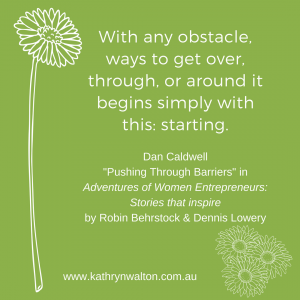


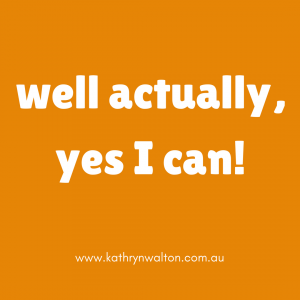
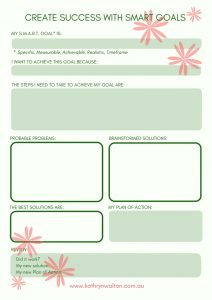
 The key to managing this is to NOTICE that it’s happening. If you are are not aware of your inner chatter, you will unconsciously believe it and go along with it instead of challenging it.
The key to managing this is to NOTICE that it’s happening. If you are are not aware of your inner chatter, you will unconsciously believe it and go along with it instead of challenging it.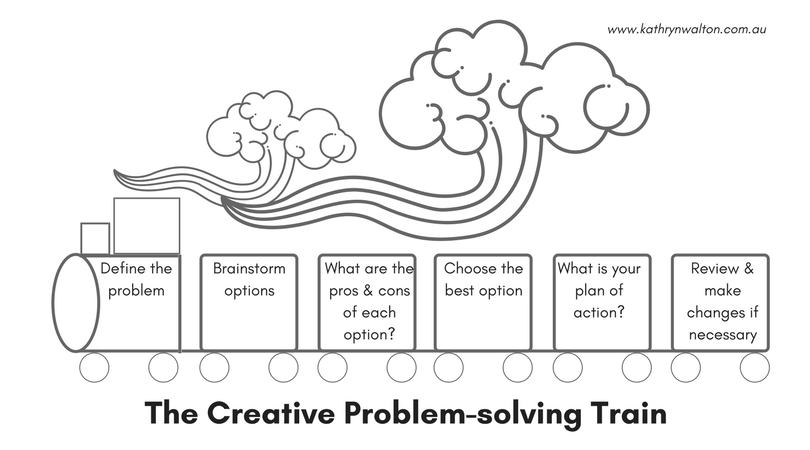
 analysing
analysing  Click here to read my last blog post
Click here to read my last blog post 
 example of mine was
example of mine was 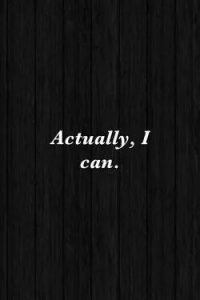
 You can collect them from songs, poems, books and social media in addition to listening to your own inner wisdom. Write them on sticky notes, in a journal or diary, print out visual reminders to stick around your home or workplace, or even use them as screen savers and wallpapers on your electronic devices. Some examples include “Just do it”, “One drop raises the ocean”, “Keep it simple”, “Just breathe”, “Stand tall”.
You can collect them from songs, poems, books and social media in addition to listening to your own inner wisdom. Write them on sticky notes, in a journal or diary, print out visual reminders to stick around your home or workplace, or even use them as screen savers and wallpapers on your electronic devices. Some examples include “Just do it”, “One drop raises the ocean”, “Keep it simple”, “Just breathe”, “Stand tall”.
 lying on the beach, your stresses trickling away into the sand beneath you) or to help you progress towards a goal (eg visualise yourself speaking in front of an audience, feeling confident, upright posture, smiling, relaxed). When I’m feeling nervous about riding my bike on a particular section of track, I stop for a few moments and picture myself riding it the way I want it to go, as if I’m watching a short video of myself successfully negotiating that section. It truly is a powerful mind-based strategy and one you can use in every area of your life.
lying on the beach, your stresses trickling away into the sand beneath you) or to help you progress towards a goal (eg visualise yourself speaking in front of an audience, feeling confident, upright posture, smiling, relaxed). When I’m feeling nervous about riding my bike on a particular section of track, I stop for a few moments and picture myself riding it the way I want it to go, as if I’m watching a short video of myself successfully negotiating that section. It truly is a powerful mind-based strategy and one you can use in every area of your life.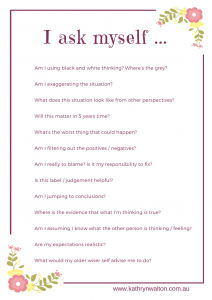 the mix. And to help you keep your strategies in play, I’ve created a free printable for you. “I ask myself …” is a beautiful keepsake of the helpful questions listed above. You can
the mix. And to help you keep your strategies in play, I’ve created a free printable for you. “I ask myself …” is a beautiful keepsake of the helpful questions listed above. You can 

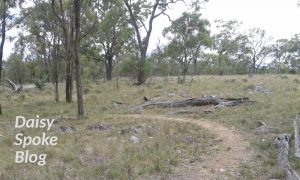
 Kathryn Walton shares information and reflections in Daisy Spoke that connect, inspire and self-empower women to make healthy choices for themselves.
Kathryn Walton shares information and reflections in Daisy Spoke that connect, inspire and self-empower women to make healthy choices for themselves.

